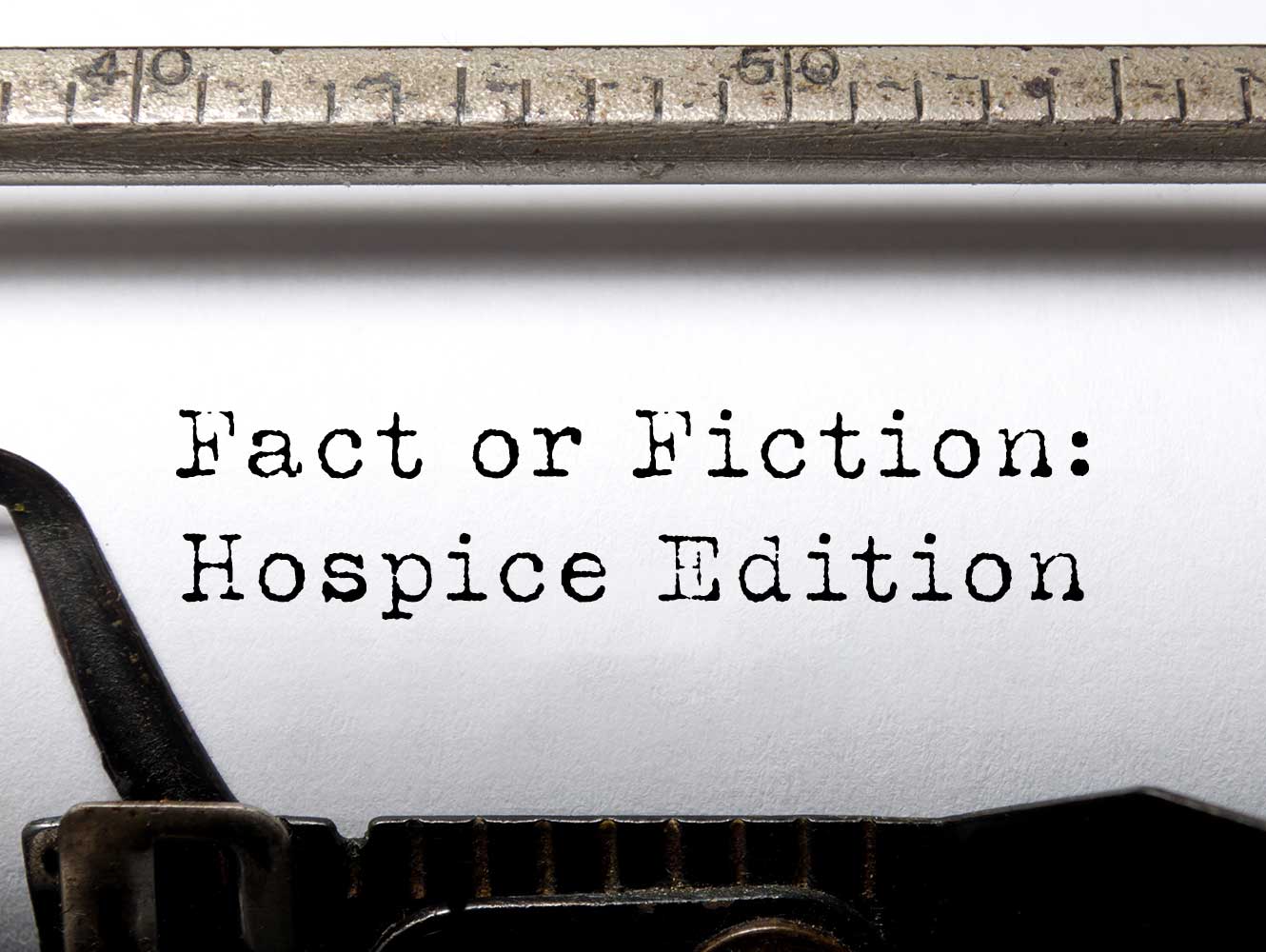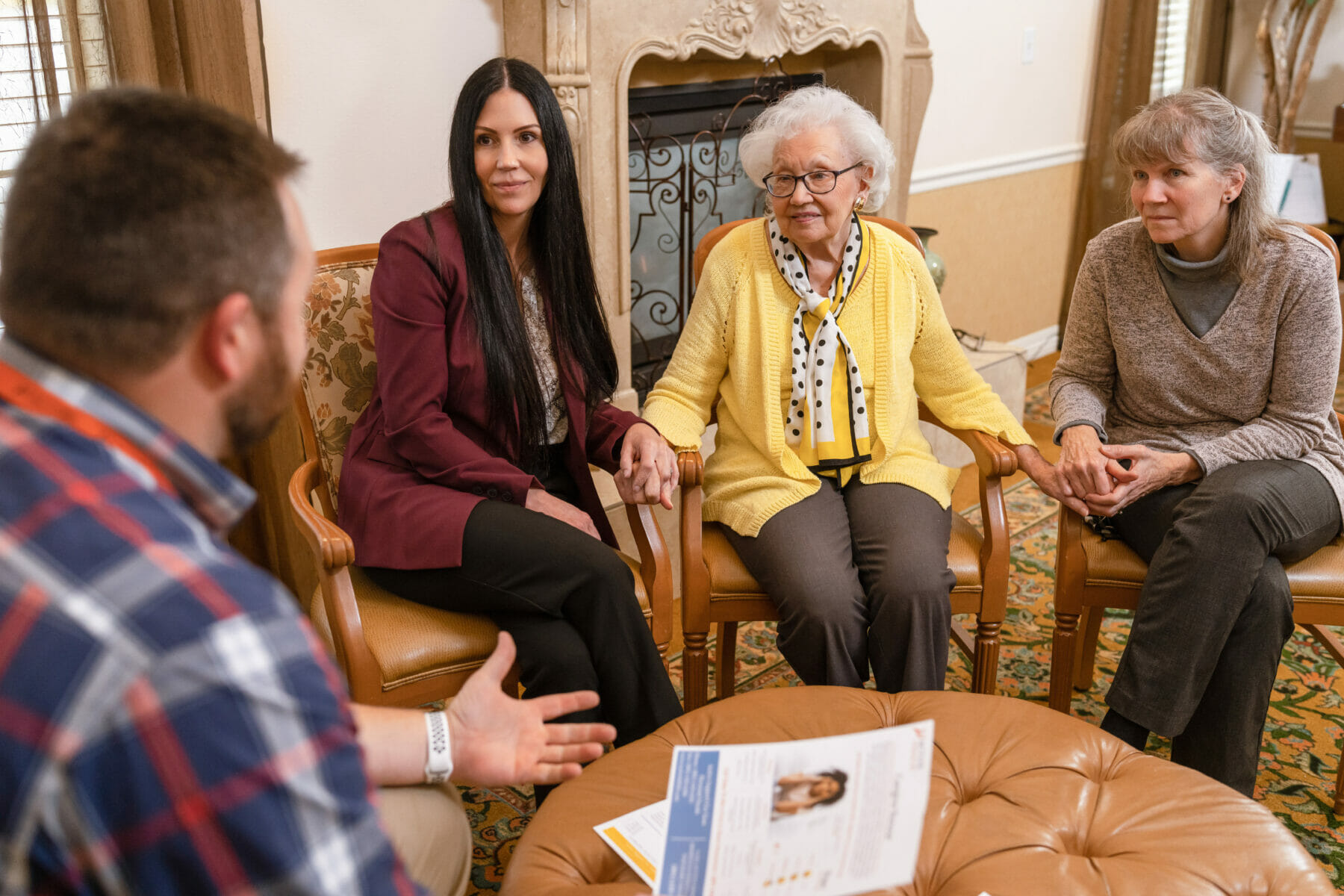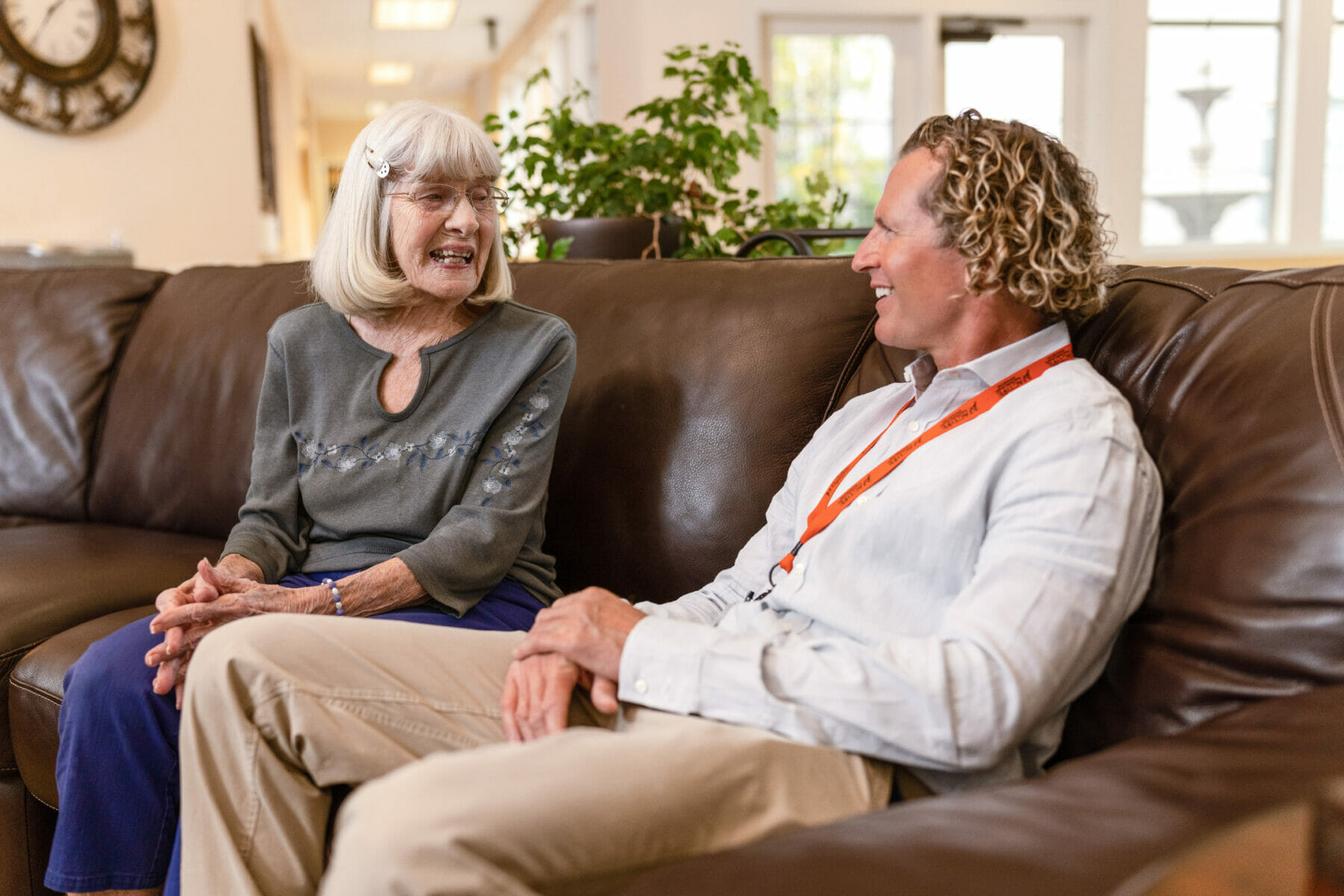
Choosing hospice is a difficult decision. We review 12 common myths to help you better understand the truth about hospice care and the value it provides as you prepare for life’s final journey.
The value of good health is priceless. Western medicine is built upon the need to cure and prevent disease. When someone is sick, we heal. If we can’t heal, we prevent decline.
The drive to cure diseases has led to some of the greatest health achievements of our lifetime. Consider polio for example. In the years leading up to the discovery of the polio vaccine, it was one of the major causes of disability in children, with about 16,000 cases occurring annually. Nowadays, polio has mostly been eradicated. In 2020, there were no confirmed cases of polio in the United States. 16,000 cases to zero.
The drive to both cure and prevent disease does have one major drawback. Death is often seen as a failure of medicine instead of a natural outcome that everyone must face. We celebrate life but often avoid even talking about death. As such, the death of a loved one often comes to us as a surprise and leaves us with feelings of remorse and regret.
The decision to choose hospice represents a shift in thought as we stop trying to cure and instead focus on caring for someone in the late stages of a disease. This shift in mindset often seems harsh and contradictory to everything we have been taught. As such, there are many myths associated with the term “hospice care”.
The 12 Most Common Myths About Hospice
Myth #1: Hospice means losing hope or giving up on a person
Hospice is not giving up on a person. Between treatments and appointments, many diseases take control of a person’s life. Hospice takes the focus away from the disease and emphasizes the person instead. It allows a person to realign their lives to what matters most. Hospice helps people spend their last moments creating lasting memories with their loved ones.
Myth #2: Hospice is only for cancer patients
Hospice care is for anyone with a terminal diagnosis. What is a terminal diagnosis? It is when a person is expected to live 6 months or less. While cancer is often a primary cause for terminal diagnoses, it is not the only one. In fact, cancer isn’t even the most common diagnosis for hospice care. The number one diagnosis for hospice is a neurological disease, specifically a combination of Alzheimer’s, other dementias, and Parkinson’s disease. These are followed by respiratory disease, heart disease, stroke/CVA and then cancer.
Myth #3: Hospice is only used during the last few moments of life
It is true that 50% of people elect hospice during the last 18 days of life. Often though, this does not allow for the person to fully utilize all the benefits of hospice. Remember, hospice care is more than pain and symptom management. Hospice provides peace of mind as well. Those who enroll earlier in hospice have more time to receive the spiritual and emotional help needed for them and their loved ones to feel better prepared for life’s final journey.
Myth #4: A person is no longer eligible for hospice services after 6 months
To qualify for hospice, a person must be given a 6-month prognosis. But that initial prognosis doesn’t put a limit on how long they can use hospice. While current guidelines help, they are not an exact science. If a person outlives that 6-month prognosis, they can continue to utilize their hospice benefits. As long as their physician recertifies that they still meet the criteria, hospice will continue to provide for their physical, spiritual, and emotional needs.
Myth #5: Hospice encourages opioid addiction
In end-of-life settings, opioid medications are the gold standard for managing both pain and shortness of breath. Doses are titrated over a period of time to ensure the lowest effective dose. Safe and effective use promotes comfort, not addiction, and does not leave the person over sedated. This allows comfort and peace of mind for the person and their loved ones.
Myth #6: Hospice eliminates your normal medications and replaces them with opioids
Recommendations will be made at the time of admission into hospice about which medications are necessary for a person’s comfort. Your hospice benefit includes coverage for medications related to your comfort care. Medications not related to your comfort care can always be continued at your discretion. They are paid for privately as they are not covered as part of the hospice benefit.
Myth #7: A patient must be bed-bound to receive hospice services
A person does not need to be bed bound to start receiving hospice services. Many who opt for hospice services continue to lead fulfilling, active, and productive lifestyles. Hospice is intended to be used over the last six months of a person’s life and is involved in more than pain and symptom management. It gives a person more control over how they spend their end of life experience.
Myth #8: Hospice care ends when the patient dies
One of the most overlooked and misunderstood concepts of hospice care is what it provides for the loved ones of the person. Hospice ensures that both the person dying, and their family are prepared for their eventual passing. Bereavement services continue at no cost for at least one year after their passing to help the family greave and adjust to their new reality. Some of the ways that we help include follow-up phone calls and counseling with chaplains and social workers.
Myth #9: Hospice is a place you go to die
While hospice can refer to a stand-alone setting where care is given, this is the exception, not the standard. Hospice refers to the comfort care given at the end of life and is given wherever a person calls home. Most people, when asked about where they would like to pass, indicate that they would prefer to pass away in their home. As such, the most common setting where care is given is a person’s private residence, followed by a skilled nursing facility and assisted living communities.
Myth #10: Hospice care is expensive
Hospice services are covered by Medicare, Medicaid and most private insurances at no cost to the recipient. This coverage includes DME (durable medical equipment), incontinence supplies, comfort medications, and more. So for most people, hospice provides one less worry as they prepare for life’s final journey.
Myth #11: Hospice is a one-time decision
As with all other important decisions, end-of-life and hospice discussions are not one-time decisions. Remember, determining when a person qualifies for hospice is not an exact science. Situations and opinions change. If a person decides they want to try another round of curative measures, they can opt out of hospice at any time. If they have opted out in the past and decide they want to resume hospice, they can also opt back in at any point in time, without penalty or repercussion, as long as they meet the criteria for a 6-month prognosis.
Myth #12: Does hospice provide 24-hour care?
There are times when 24-hour, or continuous care, is appropriate under a person’s hospice benefit. This occurs when a person experiences an acute increase in symptoms that require more intensive skilled nursing. This type of hospice care is not the norm and would only last long enough to manage the person’s symptoms or until the crisis has passed and regular care can resume. What does routine hospice care look like? Hospice care is usually given throughout the course of several visits per week, depending on an individual’s specific needs and symptoms. When symptoms increase or emergencies occur, staff is available to respond 24 hours a day, 7 days a week, regardless of the time.
The Truth About Hospice
Here at Active Hospice, we believe that hospice is fundamental in providing three key elements to good end of life care. Hospice is designed to provide comfort care, increase quality of life, and give control over one’s end of life experience. We try and avoid a prolonged dying experience. Instead, we focus on helping patients and their loved ones attain a better sense of closure and understanding. This in turn allows families to look back on a person’s last days and remember the memories and enjoyable moments they had during that time. Learn more about the value that hospice provides here.
We believe in the value that hospice brings to the lives of all who elect to use it as they prepare for life’s final journey. We also understand the difficulty that comes in making that decision. For anyone interested in learning more, we offer a free, in-home consultation with members of our staff. They can answer any questions you may have and help you understand if hospice is the right decision for you. Call today and see how Active Home Health, Hospice & Personal Care can serve you and your loved ones through life’s final journey.




